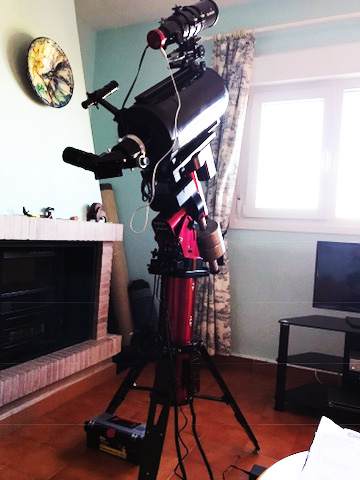Where is Mars in the sky?
 Saturday, November 22, 2014 at 6:46AM
Saturday, November 22, 2014 at 6:46AM With no clear nights here recently I have begun to lose track of Mars and other planets (and Dwarf Planets!)
This morning's chart
So Mars in in Sagittarius with Dwarf Planet Pluto - no doubt looking for a cup of tea from the teapot! I have also highlighted Comet 67P/Churyumov-Gerasimenko which is "nearby" in two dimensions - so if you are wondering where Rosetta and Philae and the comet are - you now know.
To put this into perspective - literally - here is the solar system showing the positions of all these objects. The comet orbit is shown - the vertical lines show how far above or below the eclitic the comet lies in its orbit, It is heading for the Sun.
 I like the names Rosetta and Philae - I have visited the island of Philae in Egypt and have spent some time in the British Museum looking at
I like the names Rosetta and Philae - I have visited the island of Philae in Egypt and have spent some time in the British Museum looking at  the Rosetta Stone and working out the hieroglyphics that cracked the code!
the Rosetta Stone and working out the hieroglyphics that cracked the code!
My neighbour here in Spain asked me if I had looked at the comet through my telescope - I explained how faint it was - but that I had taken an image of the area.
On the chart you will see that Venus rises after the Sun and that the Moon is very close - with a phase of 0.14%. Saturn is near the Moon. You may notice a comet symbol just above the Sun. In fact that is the comet 135P/Shoemaker-Levy at magnitude 18.39. However this is not the comet Shoemaker-Levy 9 that collided with Jupiter 20 years ago - David Levy discovered a number of comets with Gene and Carolyn Shoemaker. You will notice that Saturn is also close to the Sun in the sky.
Back to Mars - who needs a telescope - it is amazing that we can view a billion pixel interactive image from the surface of Mars and look around the immediate area - click on the image to link to the interactive viewer.
I particularly like this video/animation of "How to get to Mars" (Spirit)
 [Your Name Here] | Comments Off |
[Your Name Here] | Comments Off | 







